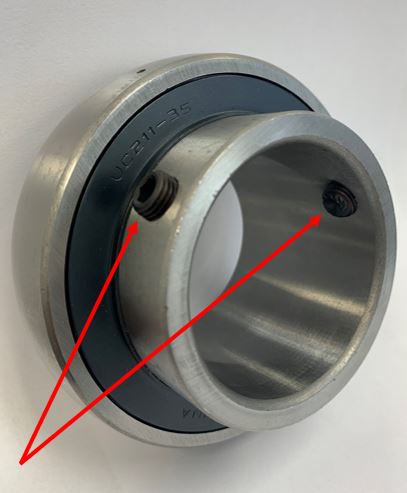
Insert bearings are usually a light slip fit onto the shaft and will use some method to “lock” the bore of the bearing to the shaft to prevent slip of the shaft inside the bore. The most common (and least expensive) way to accomplish this is with two set screws. They are usually offset from each other by 120° and intended to be tightened according to a bearing manufacturer’s specs, yet they seldom are. All too often they are over tightened causing the inner race of the bearing to deform and become oval. This usually results in premature failure. Following a bearing manufacturer’s torque recommendations will prevent such failures from happening. Another precautionary note: if the shaft is undersized for the bearing, the set screws will cause the shaft and bearing to not be concentric and the result may be vibration, especially noticeable at high speeds. Eccentric locking collars or squeeze lock collars may give better performance, especially at higher speeds.

